_______________
Additional Photos

side
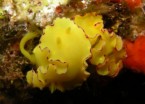
resting
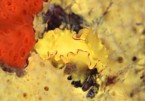
feeding
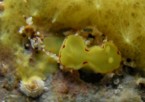
young, about 4 mm
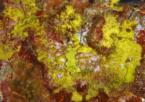
in field
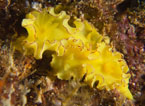
mating?

egg mass
_______________
GALLERY

|
Diversidoris flava (Eliot, 1904)
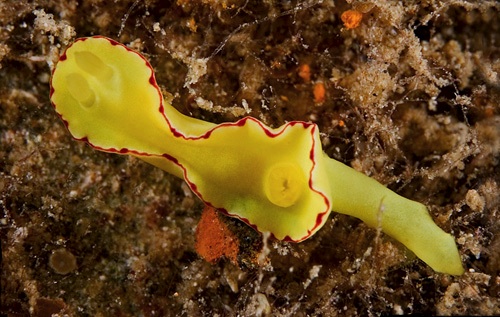
Maximum size: 30 mm.
Identification:
The
body, gills and rhinophores of this dorid are bright yellow and
there is a thin red line at the edge of the mantle. The
red line widens slightly at intervals giving it a weakly scalloped
appearance. Midway along the body, many
specimens have a large fold in the mantle margin giving the species
its
characteristic hour-glass shape.
Natural history: Diversidoris flava is a
common, diurnal species that usually rests in the open at
night. It's typically found on or near its yellow sponge prey (Hyrtios sp.) in protected to highly
exposed rocky habitats at depths of < 1 to 25 m (< 3 to 82 ft),
most
commonly on shaded vertical surfaces. Rarely, it occurs in tide pools.
Often, it may be seen nestling in
holes in the sponge that it creates as it feeds, sometimes in pairs or
clusters. Bright yellow egg ribbons are laid near or on the
sponge. An egg mass laid in the laboratory took about 6.5 days to
hatch.
Distribution:
Big Island, Maui, Oahu, Lanai and Midway: widely distributed in the
Indo-Pacific.
Taxonomic notes:
The
name means "yellow." It's listed as Noumea flava and is referred to as the "yellow Noumea" in
Hoover, 2006 (corrected in 2019 printing where it's listed as "yellow Diversidoris").
Photo: Mike
Roberts: Makena, Maui; 2007.
Observations and comments:
Note
1: ( )
|
|








